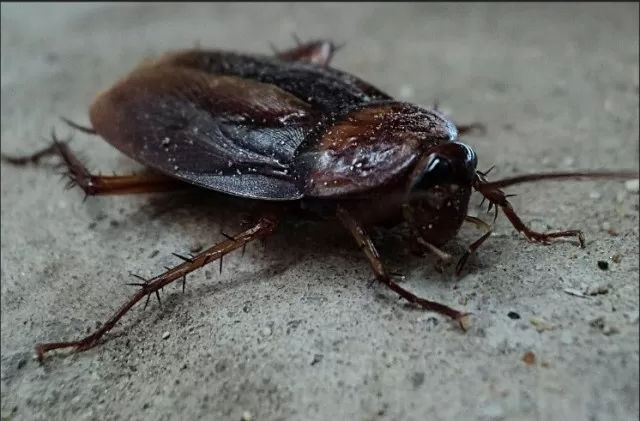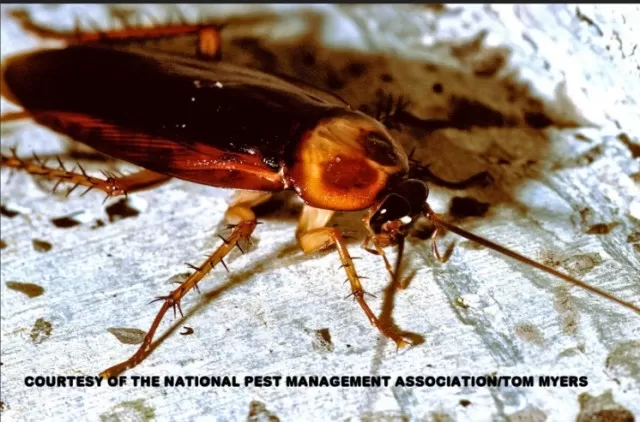Unbelievable Cockroach Facts: Prepare to Be Surprised. In the annals of history, few creatures can claim a heritage as ancient and enduring as that of the cockroach. With roots that stretch back over a staggering span of 280 million years, these resilient insects have borne witness to the ebb and flow of epochs, remaining steadfastly intertwined with the tapestry of existence itself.
Imagine, if you will, the primordial landscapes that these tenacious beings traversed – a world unrecognizable to modern eyes, teeming with untamed wilds and unfathomable mysteries. As continents shifted and climates morphed, cockroaches navigated the currents of change with a quiet determination, evolving and adapting to every twist of fate.
Their presence defies the boundaries of comprehension, a living testament to the unfathomable expanses of time. Through cataclysms and transformations, through the rise and fall of civilizations, the cockroach has stood resolute, an unyielding sentinel of continuity.
In the tapestry of life’s grand narrative, the cockroach’s lineage is an indelible thread, interwoven with the very fabric of existence. The passing millennia have only fortified their resilience, solidifying their status as survivors in a world of constant flux.
The Indomitable Spirit of Cockroaches: A Headless Marvel

The enduring legend that cockroaches can thrive without their heads may seem fantastical, but in fact, it holds true.
As corroborated by the esteemed National Pest Management Association, a headless cockroach possesses the remarkable ability to sustain itself for several weeks, engaging in mobility, responding to stimuli, and even displaying rudimentary behaviors. This astounding phenomenon arises from the insect’s unconventional method of respiration, which eschews the familiar nose and mouth route in favor of a system of apertures dispersed along its body.
Thus, not only does the headless body of the cockroach defy odds to persist, but remarkably, the disembodied head itself retains its vitality for several hours, challenging our understanding of the limits of life and survival.
The Indomitable Spirit of Cockroaches: A Headless Marvel
The enduring legend that cockroaches can thrive without their heads may seem fantastical, but in fact, it holds true.
As corroborated by the esteemed National Pest Management Association, a headless cockroach possesses the remarkable ability to sustain itself for several weeks, engaging in mobility, responding to stimuli, and even displaying rudimentary behaviors. This astounding phenomenon arises from the insect’s unconventional method of respiration, which eschews the familiar nose and mouth route in favor of a system of apertures dispersed along its body. Thus, not only does the headless body of the cockroach defy odds to persist, but remarkably, the disembodied head itself retains its vitality for several hours, challenging our understanding of the limits of life and survival.
The Prolific Prowess of German Cockroaches: A Growing Challenge

Distinguished by its brown hue embellished with two distinctive stripes adorning its posterior, the German cockroach has earned a notorious reputation as one of the most prevalent insect inhabitants in the United States.
This dominance might stem from the staggering reproductive potential of its female counterpart. Remarkably, a single female of the species has the capacity to bear a burden of 40 eggs at any given time.
Bolstered by an expedited incubation period lasting a mere three weeks, a solitary German lady roach possesses the formidable capability to oversee the emergence of an astounding brood of up to 700 juvenile roaches within the span of a year.
However, the situation becomes even more disconcerting when we contemplate the evolving landscape of this species.
Recent generations of German cockroaches have begun to exhibit a concerning level of resistance to various conventional treatment strategies. This unsettling adaptation underscores the escalating challenge that these tenacious insects pose, pushing us to reassess our approaches and seek innovative solutions to curb their inexorable multiplication.
Cockroaches: Nature\’s Astonishing Wonders
Just when you believed you had encountered an unusually large cockroach during your nocturnal encounter, prepare to be utterly amazed by the existence of a true behemoth: the captivatingly named rhinoceros cockroach.
Tipping the scales as the heavyweight champion of the cockroach realm, this remarkable insect typically boasts a weight exceeding a full ounce, leaving you truly astounded by its sheer size.
Yet, the astonishment doesn’t stop there.
The rhinoceros cockroach further asserts its place as a living marvel through its exceptional longevity, standing among the elite ranks of the longest-living insects on Earth. With an impressive average lifespan surpassing a decade, this creature defies the conventional notions of insect mortality, evoking a sense of wonder and fascination.
To add to the intrigue, the giant burrowing cockroach, as it is also aptly known, finds its abode in the underground labyrinths, hidden from plain sight.
Native to the vast expanse of Australia, this species has mastered the art of living beneath the surface, weaving intricate networks of tunnels that serve as its secret haven. As you explore the captivating world of cockroaches, the rhinoceros cockroach stands as a testament to the astounding diversity and ingenuity that nature has to offer.
Cockroaches: Nature\’s Consummate Scavengers

The versatility of cockroaches in the realm of sustenance is nothing short of awe-inspiring.
Embodying the epitome of scavengers, these resilient creatures exhibit a remarkable ability to feast upon an astonishing variety of fare. In the subterranean depths of sewers, cockroaches find sustenance amidst waste, while their forays into the forest see them repurposing deceased trees to fuel their voracious appetites.
However, it’s within the confines of our very homes and apartments that the true extent of their scavenging prowess unfolds.
While their culinary inclinations naturally gravitate towards items like cheese, meat, baked goods, and confections, these resourceful insects don’t stop there. They unabashedly indulge in a diverse menu that includes the likes of cardboard and book bindings, demonstrating a remarkable knack for exploiting even the most unexpected of food sources.
In a display of nature’s macabre efficiency, cockroaches don’t hesitate to capitalize on the remains of their fallen comrades, consuming deceased and incapacitated roaches in an unflinching cycle of survival.
The lengths to which cockroaches will go in their quest for sustenance become all the more astonishing as we uncover their inclination towards items seemingly inconceivable.
Human fingernails and toenails, for instance, find their way onto their menu, underscoring their unwavering determination to extract nourishment from even the most unconventional sources.
Operating under the cover of night, these nocturnal foragers embark on their food-seeking expeditions, venturing forth from their dim and damp hiding spots.
Their strategy involves starting their culinary explorations in proximity to these shadowy sanctuaries, further highlighting their adaptability and mastery of survival tactics. In the intricate tapestry of nature’s web, cockroaches emerge as the quintessential scavengers, drawing sustenance from an astonishing array of sources and weaving their survival into the very fabric of life itself.
*The information is for reference only.